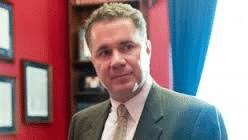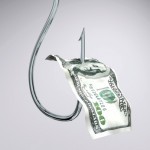
by | May 17, 2013
 Yesterday the Republican-controlled House of Representatives voted once again to repeal Obamacare in full—a vote that passed 229-115 on party-lines besides two democrats who crossed over. Not the least bit surprising was that Rep. Bruce Braley once again voted in favor of Obamacare—but my how much different this must have felt than his first vote for it three years ago.
Yesterday the Republican-controlled House of Representatives voted once again to repeal Obamacare in full—a vote that passed 229-115 on party-lines besides two democrats who crossed over. Not the least bit surprising was that Rep. Bruce Braley once again voted in favor of Obamacare—but my how much different this must have felt than his first vote for it three years ago.
A Different Landscape
Besides the obvious fact that Braley is now a U.S. Senate candidate, a variety of things made yesterday’s vote a much bigger political gamble.
Consider this, on the day the Senate passed Obamacare through the Reconciliation process—March 25th 2010—the Real Clear Politics approval rating for Congress was a shocking 17.4% approve to 77% disapprove. As bad as that seems, at that time in 2010 there was still a residue of “change†excitement in the air, the Tea Party was only just forming, Democrats had not yet lost the House, and President Obama could still credibly make the argument (especially to Independents) that he had successful solutions to the nation’s problem.
Since that day however the absolute failure of the trillion-dollar Stimulus Bill has been fully revealed, the implementation of Obamacare has been continually problematic, the economy has not recovered, and the national debt has further ballooned. And this is not even to mention the numerous scandals and mini-scandals that have surrounded the administration for the past week and a half.
Perhaps even more troubling for Braley’s Senate candidacy is that the mood of the public is remarkably similar to the grim view they had the day Obamacare passed. The following are the RCP polling averages from then and now: Congressional approval on March 25th 2010 was 17.4% approve to 77% disapprove—Congressional approval from 5 days ago on May 9th stood at 16.8% approve to 76% disapprove. Public approval of the Obamacare legislation one day after it passed on March 26th 2010 was 50.7% oppose to 39.4% support–and 8 days ago on May 9th it was 49.8% oppose to only 39% who support.
2014 Impact
For Braley’s purposes what perhaps will be the biggest difference from then and now is he has left the friendly confines of Iowa’s 1st Congressional district (D+ 27,356) and has entered a statewide contest (D+ 4,952). On top of this he has just voted in favor of one of the largest and most expensive initiatives in American history—one which only 39% of the public currently support.Â
Braley no doubt believes in this legislation to his core and will never vote against it. Nevertheless it’s a safe bet that as he pushed the “nay†button yesterday he was keenly aware that the circumstances had changed drastically since his first vote on the legislation. What has transpired since then has not been kind to the bill nor to any purple state legislators voting for it.Â
Though President Obama and many Congressional Democrats were not held accountable for their economic and policy failures in 2012, at some point their luck will run out. If in November 2014 Obamacare still can’t even muster 40% support and implementation keeps getting more and more messy–the Republican who emerges to challenge Braley will need less and less luck.         Â

by | Apr 8, 2013
 Proving his concern about our country’s national debt wasn’t mere campaign lip service, Congressman Tom Latham continued to warn against the perils of a $17 trillion debt in Urbandale on Friday. He joined an event hosted by the Iowa chapter of Fix The Debt and toured the facility of Jon Troen’s ColorFX company.
Proving his concern about our country’s national debt wasn’t mere campaign lip service, Congressman Tom Latham continued to warn against the perils of a $17 trillion debt in Urbandale on Friday. He joined an event hosted by the Iowa chapter of Fix The Debt and toured the facility of Jon Troen’s ColorFX company.
Speaking to a group of ColorFX employees Latham seemed hopeful a long-term solution could be agreed to this year saying, “I think there is a real chance of getting a bi-partisan deal passed. It has to be done to ensure our nation’s economic and fiscal security.â€Â As the owner of a company trying to navigate through an increasingly shaky economy, ColorFX owner Jon Troen fully concurred by stating, “The national debt affects everyone and it has a direct impact on how small business owners like me run and manage their operations.â€
Mr. Latham’s participation in these types of forums should be heartening to all Iowans, regardless of their political persuasion, who realize continued record deficit spending is fatal to our entire population. I have reported here before that a close look at Rep. Latham’s voting record the last several years reveals a rock-solid fiscal conservative unwilling to mortgage the future for temporary political gains. With so many politicians these days willing to speak one way around election time and then consistently vote the other way when the spotlight fades, Iowa is lucky to have someone willing to both speak out and vote for their convictions.
Below are some pictures from the event:



by Steven Waechter | Jul 1, 2011
 Much attention has been focused on the size of the national debt as a whole; roughly $14.4 trillion. That number is astonishing, but the sheer size of the debt actually hides the true horror which is in store for the economy and future generations.
Much attention has been focused on the size of the national debt as a whole; roughly $14.4 trillion. That number is astonishing, but the sheer size of the debt actually hides the true horror which is in store for the economy and future generations.
The debt has many component categories, the largest of which is called Marketable Debt. That means the portion of the debt that was issued in treasury securities that can be sold in the secondary bond market, and it is around $9.2 trillion. The rest is Non-marketable, and held mainly by the Social Security Administration through bonds that cannot be sold.
The Marketable Debt also has its own sub-components, based on the type of security that was sold to incur the debt in the first place. Treasury Bills mature in 1 year or less and accrue interest; Treasury Notes mature in 2, 3, 5, 7 or 10 years, and Bonds mature in 30 years – and the Notes and Bonds pay coupon interest every six months. Each bond is sold at the prevailing interest rate at the time of the sale.
Here is the part that is frightening: Starting under President Clinton, expanding under Bush, and exploding under Obama, the federal government has shifted its borrowing from traditional 30-year Bonds to the shorter term securities.
According to the US Department of the Treasury’s Monthly Statement of Public Debt dated May 31, 2011, of the $9.2 trillion dollars of Marketable Debt, only about $965 billion are 30-year Bonds. More than $6 trillion are on Notes, with maturities ranging from 2 to 10 years, and a whopping $1.5 trillion are on 1-year Bills.
We are running record deficits, so we aren’t paying any of these off when they mature – we just roll them over onto new securities. We’re also adding another $1.6 trillion on to the pile.
Right now the Federal Reserve is fixing interest rates at levels so low that they cannot be maintained forever. When the Fed raised interest rates to more than 20% back in the 1979-82 recession, the Treasury actually sold some bonds at interest rates of 20% or higher. Imagine if interest rates went up to just 10% today, and stayed there for a couple of years. All of those Bills and Notes that mature and are rolled over will roll over to higher interest rates.
The interest payments alone will easily top $700 billion dollars a year, and since the debt is likely to grow further as interest rates go up, the country is likely to pay well over $1 trillion per year in coupon interest alone -which will be financed by the issuance of new Treasury Notes.
Imagine a world where the Army is disbanded, Medicare covers only critical care needs, the Social Security age is retroactively raised to 75, and the all retired government officials lose their pensions because the United States needs to dedicate so much of its budget to paying the interest on the debt. These are politically impossible measures.
The only other way to avoid direct default is to print money – destroying the nation’s economy with hyperinflation but technically making the interest payments, albeit with dollars devalued to near worthlessness. That’s how the Federal Reserve managed to keep interest rates so low up to this point – by buying Treasuries at artificially low interest rates with printed money. That is why Bill Gross of PIMCO dumped every piece of US Treasury paper his hedge fund owned – the returns on these bonds would have been eaten up by inflation.
There it is – either we ruin the dollar or we default. Default is by far the better option; we can restructure our debts to something more manageable. This will ruin our credit rating forever, so future politicians will not be able to run deficits for vote-buying projects and illegal “Kinetic Military Actions,†whatever those are. There are silver linings everywhere.

by Steven Waechter | Jun 13, 2011
 Imagine a plot of land in the desert, consisting only of mesquite scrub and dust. If you assembled a system of sprinklers on this desert land, and ran them heavily enough, you could make the desert green with grass, corn, or even water loving willow trees. But then the water supply you are stealing from runs dry, and the sprinklers sit there, idle. The greenery of your efforts wilts, dies and turns to dust.
Imagine a plot of land in the desert, consisting only of mesquite scrub and dust. If you assembled a system of sprinklers on this desert land, and ran them heavily enough, you could make the desert green with grass, corn, or even water loving willow trees. But then the water supply you are stealing from runs dry, and the sprinklers sit there, idle. The greenery of your efforts wilts, dies and turns to dust.
This is the story of government stimulus. First, the federal government stole – yes, I said stole – hundreds of billions of dollars to bail out first the banks, and then General Motors, and then spend hundreds of billions more on the President’s stimulus package, which promised to reignite the economy, fight of the recession, and reduce unemployment. The federal government crowded out private borrowers from the capital markets with their enormous deficits, damaging other sectors of the economy – but no matter. The stimulus program would create or “save†jobs elsewhere, making the whole thing worth while, somehow.
It didn’t work. It was never going to work. All we were left with was another economic bubble; this one not in stocks or in housing, but in government spending. Now, the cash supporting this situation – the air inflating the bubble – is being printed, at the cost of inflation and rising prices on everything; essentially theft through increased costs of living. Consumer spending is shifting to cover the increased costs of food and fuel, to the detriment of other goods and services.
As it became an obvious failure, the first impulse was to double down with another stimulus program – digging a deeper well. But not this time; the wealth of the country was depleted, the water was gone.
Now, we stand at the beginning of the double-dip recession – a recession within the depression that was born from the last recession. This time there is no way out and no way to delay. The economy as a whole can no longer afford to supply the cash to keep the government spending bubble inflated, a bubble that never should have existed in the first place.
It is time for the economy to be purged of all the mal-investments of both government and business and finally rebalance itself, something which it has not had a chance to do. Government stimulus was doomed from the beginning because it only stimulated a portion of the economy that depended entirely upon government money; the rest of the economy was damaged by this, not improved by it, and governments can, in fact, run out of money.
The next phase of the recession will be more painful than the first; with an economy that has been further weakened and a government lacking the resources to do much of anything, the next big dip is going to be one for the history books – which is terrifying.
![Pondering the Passion for Paul: Ron Hits Town as Iowa Campaign Hits Stride]()
by | May 25, 2011
 On a macro level the last few weeks of the Ron Paul Presidential campaign have been a little bumpy. The turbulence was provided by a much publicized exchange with WHO Radio’s Simon Conway and rough national television interviews with MSNBC’s Chris Mathews and Fox News’ Chris Wallace. The fact that the Mathew’s interview would be contentious was likely known, but having Chris Wallace, on Fox News Sunday, aggressively infer that the “general welfare†clause was valid justification for unlimited Federal government involvement had to come as a shock (I know I was shocked).
On a macro level the last few weeks of the Ron Paul Presidential campaign have been a little bumpy. The turbulence was provided by a much publicized exchange with WHO Radio’s Simon Conway and rough national television interviews with MSNBC’s Chris Mathews and Fox News’ Chris Wallace. The fact that the Mathew’s interview would be contentious was likely known, but having Chris Wallace, on Fox News Sunday, aggressively infer that the “general welfare†clause was valid justification for unlimited Federal government involvement had to come as a shock (I know I was shocked).
If one thought that would dampen his supporters’ enthusiasm, a few minutes spent at the Paul campaign headquarters in Ankeny on Monday would be enough to prove them mistaken. In fact the effort in Iowa seems to be humming along at an impressive pace. In less than two weeks, over a 110 County co-chairs have volunteered, 8 District co-chairs have signed on, and Mr. Paul has picked up his first Iowa legislative endorsement in Glenn Massie (R-Des Moines).
Due to this progress, for the second time in two weeks the candidate himself was on hand to personally thank these volunteers and to take a few questions from the media. During the Q and A session Paul spoke on Israel, reiterating his stance that their dependence on the U.S is effectively making them weaker and not stronger. He also happily acknowledged that more and more Republicans are coming around to his position against our involvements in Iraq, Afghanistan, and Libya. In his view, this shift in thinking is the result of a mixture of disenchantment with realities on the ground and the fact that it’s easier for Republicans to be less supportive now that these conflicts can be seen as “Obama’s wars.†On the domestic front the only thing worth noting was his comments regarding Mike Huckabee’s decision not to enter the race. He called this development “significant,†adding that he thinks there is a good chance that he will appeal to Huckabee’s supporters.
The more time one spends covering the Ron Paul presidential run the more one understands the reasons for his supporters’ legendary levels of enthusiasm. Chief among these is the fact that what they are involved in is far more a movement than a campaign. Unlike what happens around populist candidates, they are not drawn to Paul by his smoothness, style, empathy, or one-liners. They are gravitating toward a philosophy—a philosophy that is not only at odds with nearly every other GOP candidate, but of the Republican Party establishment in general.
Before the event I interviewed Paul’s Iowa Campaign Chairman, longtime Republican leader Drew Ivers, and this topic came up. Referencing this drift away from the Party, Ivers said, “I have carried plenty of water for the Republican Party over the years, and I have earned the right to criticize them.†When one looks at the legislative performance of the Party as a whole over the last 25 years, it’s hard to argue that this criticism is undeserved. Unless of course we are willing to pretend that the financial collapse of 2008 and the 14.3 trillion dollar debt involved only Democrats.
Aside from making it clear that Ron Paul is pro-marriage and pro-family, the topics which Ivers emphasized revealed another reason why Paul’s staff and supporters have bound together so tightly behind their candidate…no one else in the race is singing their tune. A perfect example of this is the issue of Federal debt and deficits. Along with all the Republican hopefuls the Paul camp views Federal spending as 2012’s central issue, but unlike any of the others they favor a different solution.
Mr. Ivers was speaking for the majority of the event’s attendees by showing great concern over the Federal Reserve, quantitative easing, and the value of the dollar. For Ivers, and for Paul, the Fed is the way to begin gaining control of run-away spending. Beyond just proposing spending cuts, their solution is to stop the endless spending by stopping the Federal Reserve from endlessly printing money. This type of systemic change is emblematic of many of Paul’s proposals, and is an approach that the Party, likely for political reasons, has never warmed to.
The fact that Mr. Paul is the only established Republican candidate talking about such things as eliminating the Fed, quantitative easing, and immediately ending our foreign deployments has gained him passionate support, but has also left a steep hill to climb.
What Ron Paul and his supporters are seeking is not a mere tinkering with the Republican message. They are calling for a return to a strict Constitutional approach to Federal governance, something that has not been practiced for generations. The political challenge inherent in this is vast, and is certainly one that Drew Ivers is fully aware of. He summarized it quite well by saying that the Country at large has “moved so far to the left that the message seems strange.â€
There are few bonds stronger than that of a shared conviction, and perhaps this more than anything else explains the enthusiasm of Ron Paul’s supporters. For their message to connect they face the Herculean task of convincing a Country to shift its current concept of the role of government, ironically back to its original form.
After spending an afternoon with the staff and volunteers who will be responsible for spreading this message, I can report that in spite of the odds they remain motivated, passionate, and in general completely undaunted by the challenge.
Photo courtesy of TEApublican.




 Yesterday the Republican-controlled House of Representatives voted once again to repeal Obamacare in full—a vote that passed 229-115 on party-lines besides two democrats who crossed over. Not the least bit surprising was that Rep. Bruce Braley once again voted in favor of Obamacare—but my how much different this must have felt than his first vote for it three years ago.
Yesterday the Republican-controlled House of Representatives voted once again to repeal Obamacare in full—a vote that passed 229-115 on party-lines besides two democrats who crossed over. Not the least bit surprising was that Rep. Bruce Braley once again voted in favor of Obamacare—but my how much different this must have felt than his first vote for it three years ago.







